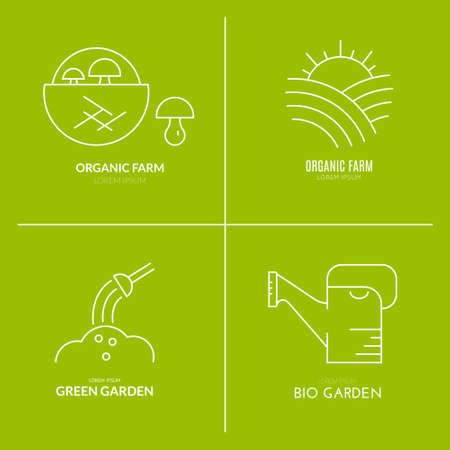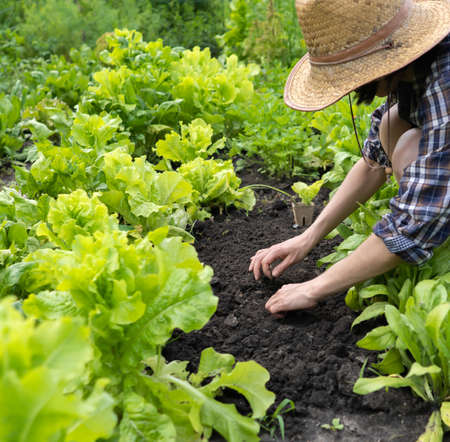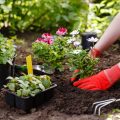1. Understanding the Four-Season Garden Concept
A four-season garden is designed to look beautiful all year long—spring, summer, fall, and winter. Unlike traditional gardens that might peak in just one season, a four-season garden uses a thoughtful mix of plants, structure, and textures to ensure theres always something interesting to see no matter the time of year.
The Role of Structure in Year-Round Gardens
Structure is what keeps your garden looking good even when flowers fade. Think of things like evergreen shrubs, ornamental trees, garden paths, fences, and arbors. These elements provide form and interest throughout the year—especially in winter when most plants are dormant. A well-designed garden includes a strong “skeleton” made up of these structural components.
Why Texture Matters
Texture adds depth and variety to your garden. It’s about how leaves, bark, and plant shapes feel and look—from soft ferns to rough tree bark or spiky grasses. Mixing different textures creates visual interest even when flowers aren’t blooming. For example:
| Plant Type | Texture Description | Example Plants |
|---|---|---|
| Fine Texture | Delicate and airy foliage | Fern, Coreopsis |
| Medium Texture | Balanced leaf size and shape | Daylilies, Hydrangeas |
| Coarse Texture | Bold or large leaves with strong shapes | Hosta, Rhubarb |
Balancing Seasonal Interest
A key part of designing a four-season garden is choosing plants that shine in different seasons. The goal is to have color, texture, or structure every month of the year. Here’s a simple breakdown:
| Season | Main Features to Include | Example Plants or Elements |
|---|---|---|
| Spring | Blooms and fresh green foliage | Tulips, Daffodils, Forsythia |
| Summer | Colorful flowers and lush growth | Black-eyed Susan, Coneflower, Daylily |
| Fall | Rich foliage colors and late blooms | Maple trees, Sedum, Asters |
| Winter | Bark texture, evergreen shapes, berries | Red-twig Dogwood, Boxwood, Holly |
The Importance of Planning Ahead
A successful four-season garden doesnt happen by accident. It takes careful planning—thinking through bloom times, plant heights, color combinations, and how each area will look during each season. By keeping structure, texture, and seasonal balance in mind from the start, you can create a landscape that stays engaging all year long.
A Garden That Grows With You
This kind of garden not only brings beauty throughout the year but also grows better over time. As plants mature and your layout fills out with layers of interest, youll enjoy a space that feels alive no matter the month.
The next step is learning how to choose the right plants for each season—which well explore in Part 2.
2. Choosing Plants for Year-Round Interest
Creating a garden that looks beautiful in every season starts with choosing the right plants. By combining perennials, annuals, shrubs, and trees that offer color, texture, and structure all year long, you can keep your landscape vibrant no matter the time of year. Its also important to consider your USDA hardiness zone to ensure your plant choices will thrive in your local climate.
Understanding Plant Types
Perennials
Perennials come back year after year and are great for adding consistent color and form. Many bloom in spring or summer but also offer interesting foliage or seed heads in fall and winter.
Annuals
These plants complete their life cycle in one season, but they provide bold color during their peak months. Theyre perfect for filling gaps and adding seasonal flair.
Shrubs
Shrubs add structure and can offer flowers, berries, or evergreen foliage depending on the variety. Theyre key players for multi-season interest.
Trees
Trees provide shade, height, and focal points in the garden. Choose varieties with spring blossoms, summer leaves, fall color, or winter bark to keep your garden looking alive year-round.
Seasonal Interest by Region
Plant performance varies by region. Heres a quick guide to help you pick the right plants based on U.S. climate zones:
| Region | Spring | Summer | Fall | Winter |
|---|---|---|---|---|
| Northeast (Zones 3–7) | Daffodils, Forsythia | Daylilies, Coneflowers | Sugar Maple, Sedum | Red Twig Dogwood, Evergreens |
| Southeast (Zones 6–10) | Azaleas, Dogwood Trees | Zinnias, Hibiscus | Crape Myrtle, Oakleaf Hydrangea | Camellias, Hollies |
| Midwest (Zones 4–7) | Tulips, Lilacs | Black-eyed Susan, Bee Balm | Asters, Burning Bush | Arborvitae, Ornamental Grasses |
| Southwest (Zones 5–9) | Lantana, Desert Marigold | Agave, Salvia | Purple Sage, Russian Sage | Cactus varieties, Yucca |
| Pacific Northwest (Zones 6–9) | Hellebores, Rhododendrons | Lavender, Hydrangeas | Mosses, Evergreen Ferns | |
| West Coast/California (Zones 7–10) | Poppies, Ceanothus | Bougainvillea, Coreopsis |
Selecting for Texture and Color Throughout the Year
A successful four-season garden uses more than just flower color—it plays with textures from bark to foliage. For example:
- Bark: Paperbark maple and river birch have peeling bark that stands out in winter.
- Berries: Winterberry holly produces bright red berries loved by birds and humans alike.
- Foliage: Heuchera offers colorful leaves in purple or lime green that last through multiple seasons.
Create Layered Planting Designs
A good layout includes layers: tall trees in the background, shrubs in the midground, and perennials or annuals up front. This creates visual depth while ensuring interest from top to bottom year-round.
Example Plant Combination for Year-Round Appeal (Zone 6)
- Spring: Daffodils + Flowering Dogwood Tree
- Summer: Coneflowers + Boxwood Shrubs
- Fall: Asters + Red Maple Tree
- Winter: Holly Bushes + Ornamental Grasses
This mix ensures you have blooms in spring and summer, fiery foliage in fall, and textural elements like evergreens and grasses for winter beauty.
The key is to select a combination of plants that shine at different times of year while complementing each other in form and function. Keep experimenting with combinations until your garden feels balanced across all four seasons.

3. Seasonal Design Strategies and Layout Tips
Designing a four-season garden means thinking ahead so your outdoor space looks beautiful all year round. With the right strategies and layout, you can make sure that every part of your garden offers something special in spring, summer, fall, and even winter.
Plan for Year-Round Interest
Start by selecting plants that shine in different seasons. Group them together to ensure theres always something blooming or visually appealing. Don’t forget about texture, structure, and color—from vibrant flowers to colorful bark and evergreen foliage.
Layering Plants for Depth and Interest
Use a layered planting approach to create depth and seasonal variation:
| Layer | Plant Type | Seasonal Feature |
|---|---|---|
| Tall (Back) | Trees & Tall Shrubs | Spring blossoms, fall foliage, winter structure |
| Mid (Middle) | Perennials & Medium Shrubs | Summer blooms, colorful leaves in fall |
| Low (Front) | Groundcovers & Bulbs | Early spring flowers, winter greenery |
Create Focal Points for Each Season
Add focal points that stand out in specific seasons. This could be a flowering tree in spring like a dogwood, a lush hydrangea bush in summer, ornamental grasses in fall, or a sculptural evergreen in winter.
Use Hardscaping to Add Structure
Hardscape features like paths, garden walls, pergolas, or decorative pots provide visual interest even when plants are dormant. They also help define spaces within the garden for better organization throughout the year.
Design with Flow and Movement
A thoughtful layout guides the eye and encourages movement through the garden. Use curved pathways or staggered plantings to lead visitors naturally from one area to another.
Zoning Your Garden by Seasonal Highlight
You can divide your garden into zones where each area has a seasonal “moment.” For example:
- Spring Zone: Daffodils, tulips, flowering cherries near the front walkway
- Summer Zone: Coneflowers, daylilies, lavender around the patio seating area
- Fall Zone: Maple trees, asters, sedum along backyard borders
- Winter Zone: Evergreens, red twig dogwoods near windows for indoor viewing
Tip:
Include plants with multi-season appeal—like witch hazel or oakleaf hydrangea—for added value across multiple times of the year.
Think About Color and Texture Transitions
The transition from one season to another should feel smooth. Combine evergreens with deciduous plants so there’s always contrast. Mix fine textures (like ferns) with bold ones (like hostas) to keep things interesting even when blooms fade.
Irrigation and Maintenance Planning
A well-designed four-season garden also considers practicality. Make sure your layout allows easy access for pruning and watering. Drip irrigation systems work well for layered beds and reduce maintenance time.
This kind of thoughtful design ensures your garden remains engaging every month of the year—not just during peak bloom times.
4. Hardscape Elements and Evergreens for Winter Appeal
Winter may strip away colorful blooms and lush foliage, but that doesn’t mean your garden has to look bare or lifeless. By incorporating hardscape features and evergreen plants, you can ensure your four-season garden remains visually interesting even during the coldest months.
Using Hardscape for Structure and Style
Hardscape elements provide structure, guide movement, and add focal points in the garden. During winter, when most plants go dormant, these features become even more important. Here are a few ideas to consider:
- Garden Paths: Stone, gravel, or brick paths help define spaces and remain visible year-round.
- Trellises and Arbors: Even without climbing vines in bloom, these structures offer height and visual interest.
- Benches and Seating Areas: A simple bench surrounded by evergreens can be an inviting winter focal point.
- Decorative Elements: Birdbaths, sculptures, and raised planters create year-round personality in your garden.
Selecting Evergreens for Year-Round Color
Evergreens retain their foliage through winter, offering color and texture when other plants have gone dormant. Choose a mix of shapes and shades to keep things lively. Here’s a quick guide:
| Type | Examples | Benefits |
|---|---|---|
| Shrubs | Boxwood, Holly, Rhododendron | Add structure; some offer berries for birds |
| Trees | Pine, Spruce, Cedar | Create height and privacy; wind protection |
| Groundcovers | Ivy, Juniper, Creeping Jenny (evergreen variety) | Cover bare soil; prevent erosion |
Combining Structure with Greenery
The key to a beautiful winter garden is the thoughtful blend of hardscape elements with evergreen plantings. For example, a winding stone path framed by low boxwoods leads the eye through the space while providing symmetry. Pairing a wooden arbor with climbing evergreen ivy adds vertical interest even without flowers.
Tips for Designing Winter Interest Areas:
- Layer heights: Combine tall trees with mid-height shrubs and low groundcovers.
- Add contrast: Use different textures—smooth stones next to feathery pines—for visual appeal.
- Create focal points: Place a birdbath or sculpture where it can be enjoyed from indoors during snowy days.
- Use lighting: Low-voltage path lights or spotlights on evergreens enhance beauty after dark.
A well-designed four-season garden isn’t just about spring flowers or fall foliage—it’s about creating lasting beauty through every season. With the right combination of hardscaping and evergreens, your landscape can shine all year long—even under a blanket of snow.
5. Maintenance Tips for a Thriving Four-Season Garden
Keeping your four-season garden healthy and beautiful year-round requires a bit of seasonal care. Each season brings different needs—whether it’s pruning back overgrowth, adding mulch to insulate roots, or protecting tender plants from frost. Here’s how you can keep your garden thriving throughout the year with simple maintenance tips.
Spring: Wake Up Your Garden
As the weather warms up, it’s time to prep your garden for new growth.
- Clean up: Remove dead leaves and debris from beds and borders.
- Prune: Trim back winter-damaged branches on shrubs and trees.
- Fertilize: Apply a balanced fertilizer to encourage healthy growth.
- Divide perennials: Split and replant crowded clumps to promote vigor.
Summer: Keep It Growing Strong
The summer months are about upkeep and watering as your plants hit their peak.
- Water regularly: Especially during hot spells, make sure plants get deep watering early in the day.
- Deadhead flowers: Remove spent blooms to encourage more flowers.
- Pest watch: Inspect leaves for pests like aphids or spider mites and treat naturally when possible.
- Mulch: Top off mulch to retain moisture and suppress weeds.
Fall: Prepare for Rest
This is the time to clean up and set your garden up for winter success.
- Rake leaves: Clear fallen leaves from lawns and beds to prevent disease.
- Add compost: Enrich soil with organic matter before winter sets in.
- Cut back perennials: Trim foliage after it dies back, unless you want to leave seed heads for birds.
- Plant bulbs: Add spring-flowering bulbs like tulips and daffodils now for early color next year.
Winter: Protect and Plan
Your garden may be resting, but there’s still work to do behind the scenes.
- Protect tender plants: Use burlap or frost cloths on shrubs sensitive to cold temperatures.
- Avoid walking on frozen grass: It can damage turf underfoot during dormancy.
- Tool care: Clean, sharpen, and oil gardening tools for next season.
- Create a plan: Start planning changes or additions for spring planting based on this year’s successes and challenges.
Your Year-Round Garden Care Cheat Sheet
| Season | Key Tasks |
|---|---|
| Spring | Tidy beds, prune damaged branches, divide perennials, fertilize |
| Summer | Irrigate deeply, deadhead flowers, monitor pests, refresh mulch |
| Fall | Add compost, rake leaves, plant bulbs, cut back perennials |
| Winter | Cover delicate plants, maintain tools, avoid lawn traffic, plan ahead |
A little care each season goes a long way toward building a resilient four-season garden that looks great all year long. By staying on top of seasonal tasks like mulching, pruning, and pest control, you’ll enjoy continuous beauty in every season—from spring blooms to winter textures.


